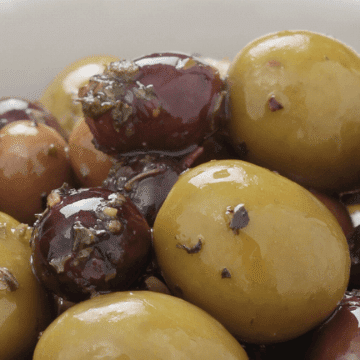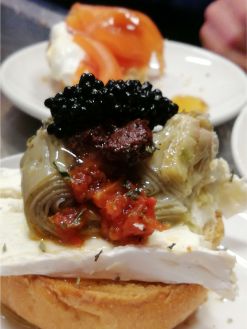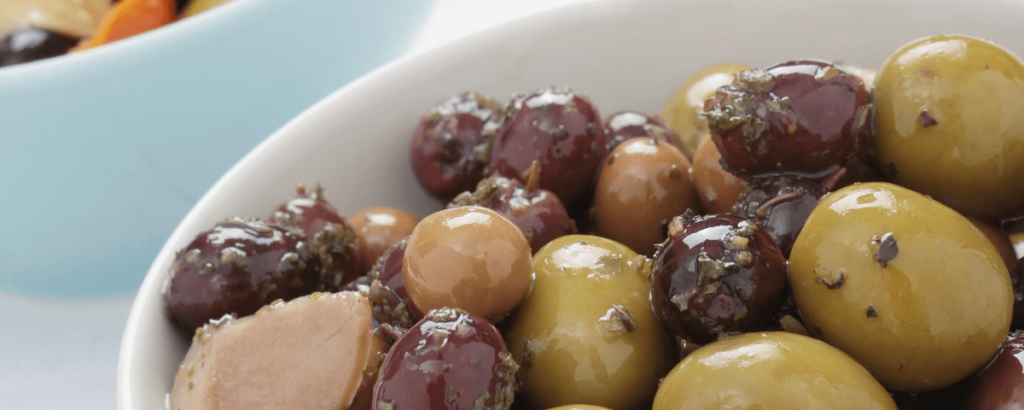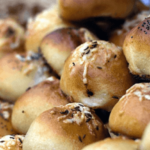
Best Gifts for Foodies: Spanish Food Items
BARCELONA AND SPAIN FOOD ITEMS THAT MAKE GREAT GIFTS FOR FOODIES
Spanish food items make great gifts for foodies. If you don’t want to get anyone the kind of souvenirs that are going to end up gathering dust on a shelf at your friends’ house, we’ve prepared for you a list of Spanish foods that guarantee a successful gift.
These are our favorite Spanish food gifts:
1
Spanish Alcoholic Drinks
- Spanish red wine from La Rioja if probably the most famous and what your friends with just general knowledge of Spain will expect. But if you want to surprise them go for the more elegant wines from Ribera del Duero or the surprising mineral tastes of Priorat wines.
- White wine from Spain might not be as famous as red wine, but not for that it isn’t less wonderful. Go for Albariño from the Galicia area, or Penedes near Barcelona.
- Cava, the local sparkling, is made following the méthode champenois of Champagne. While it is produced all over Spain, the very best is produced in the Penedes Wine County outside of Barcelona.
- Sangria. It is easy to make sangria at home. But if you prefer a ready-made solution, you can find it also bottled. However, choose wisely. The souvenir bottles shaped like flamenco dancers or bullfighters aren’t going to be good. And the Don Simon sangria in tetrapack sold in supermarkets is… for teenage parties. Go for gourmet brands such as Lolea instead.
- Whisky and brandy. The most famous brand of whisky from Spain is DYC, and their distillery is located in Segovia, near Madrid. But Spain is more known for its brandy. You can’t go wrong with Torres, Don Pedro or Azteca de Oro.
- Liquors are also very popular as digestives. In Catalonia you’ll find Aromes de Montserrat made from herbs and Ratafia, made from nuts. There’s also Melody, inspired in Catalan Creme Brulee. In Galicia there’s Orujo from fermented grape skin, and in Navarra there’s Patxaran made from local berries in a base of anisette, coffee and cinnamon.
- Vermouth. Vermouth is a very popular drink to go with appetizers or some tapas before lunch. Izaquirre, Perucchi and Petroni are popular brands you can find in supermarkets. Some vermouth bars in Barcelona sell their own vermouth as well.
- Beer. Did you know Spaniards drink more beer than wine? It’s cheaper and it goes with any informal meal, so why not? Each region has its own favorite brands. In Barcelona you can buy Estrella Damm, San Miguel and Moritz. In the rest of Spain there’s also Mahou, CruzCampo, Amstel… Plus loads of small craft beer brands that you can find at a local level. Ask around at your favorite beer bar!
- Other commercial liquor brands. All these liquor brands are from Spain and it might surprise you: Licor 43, Anis del Mono, Ron Bacardi.
Before buying, make sure to check how many bottles per person are you allowed to pass through customs in your country. And check this other post about Spanish spirits to learn more about them!
2
Sweets
- Turron. Spain most famous Christmas treat is a bar made of almonds, sugar and other ingredients depending on the turron variety. In December and January you can buy commercial brands in any supermarket, but the rest of the year you still can find it in specialty shops. We’ve listed the best turron shops in Barcelona in our blog for your convenience.
- Other Christmas specialties. Marzipan is a big thing in Spain, specially if you are visiting Toledo. Other treats include polvorones cakes and neules. To see a detailed list of Spanish Christmas treats click here.
- Carquinyolis. This is a Catalan cookie similar to Italian biscotti. In Barcelona you can find it in most artisan bakeries, as well as in supermarkets.
- Tortas de aceite. Typical from Seville and made with lots of olive oil, anis and sesame, they are great for dessert or a snack. You can find it in supermarkets under the brand Ines Rosales.
- Tea cookies. Catalonia has two legendary brands of tea cookies and everyone has a box of them at home. They are Birba and Trias, and you can find them in supermarkets in Barcelona.
- Violet candy. A traditional treat from Madrid where they are easy to find. In Barcelona only some cake stores carry them, but you can buy them in bulk at the Boqueria Market.
- ChupaChups lollypops. Did you know it’s a Spanish brand? Salvador Dali himself designed their logo! A great cheap gift for kids.
3
Chocolate
Chocolate deserves to have its own section because who doesn’t love chocolate? As long as you aren’t travelling by car, your chocolate should travel well. Here are some ideas:
- Frutas de Aragon. These are candy fruit covered in chocolate. They are typical from Zaragoza and its surrounding region, but you can often find it in supermarkets in other areas of Spain as well.
- Barcelona “flower tiles” chocolates. The chocolate tiles designed by Puig i Cadafalch to be used as pavement have become a Barcelona design icon. And you can find them in chocolate form in many museum and tourist site gift shops. And you’ll also find them in chocolate stores such as Cacao Sampaka in Barcelona.
- Casa Amatller chocolates. The Amatller family owned a chocolate factory in the early 1900’s, and they hired Puig i Cadafalch to build a building for them in Passeig de Gracia. Now the brand is owned by another family of chocolate makers, Simon Coll, who have preserved the original Amatller packaging by modernist artist Mucha. Their chocolate boxes make gorgeous gifts, and they also have some with the image of the Casa Amatller building on them.
- Hot chocolate powder. If you want to relive the experience of eating Spanish thick hot chocolate at home, you can buy hot chocolat e powder or chocolate bars to melt in any supermarket (Valor, Paladín and Torras are trusted brands).
- Catanies. Created by a cake maker in Vilafranca del Penedes, near Barcelona, these are almonds covered in chocolate. You’ll find them in supermarkets, chocolate stores and gourmet groceries, sometimes under other brand names.
4
Meats & Cheese
Meat products should make any list of Spanish food items. If you want to buy them as souvernirs and travel with them, you need to be aware of your country customs rules. In some countries or states importing meat might not be allowed at all – check always first. Sometimes when they are vacuum packed in plastic with no aluminum sheets on it, you have less possibilities of getting in trouble at customs.
- Spanish Ham. If you are buying it as a gift, go for Jamon Iberico, even better if it is from Jabugo. It’s the very best. If you are curious to know the difference with the other Spanish ham varieties, don’t miss the post I just linked.
- Chorizo. The second most famous Spanish pork specialty is red and mildly spicy. Make sure to buy iberico, too. Or you’ll end up with the chewy variety we use for sandwiches.
- Salchichon, longaniza and fuet. Different types of cured minced meat sausages. Some come covered in herbs and pepper corns.
- Sobrassada. A delicious pork spread typical from Mallorca. It incorporates paprika, what gives it its distinct red color. It is made in thick sausage shape: cut it in slices, peel off the skin and spread the rest over toast bread.
- Meat preserves. Supermarkets and gourmet stores often carry canned traditional dishes. Go for rabo de toro stew (oxtail), perdiz en escabeche (marinated quail), callos a la madrileña (Madrid style tripe)…
5
Fish and Seafood preserves
Just like with meat and poultry, canned fish and seafood are delicious Spanish food items that are easy to find and travel well. And they can also make a very original gift for foodies! Here are some ideas:
- “Bonito” Atun en escabeche. Marinated canned premium tuna that you can add to salads, or eat as an appetizer.
- Berberechos. Cockles come shelled and preserved in a salty liquid that many Spaniards adore. Pour on an appetizer bowl, add some lemon juice and optionally sprinkle with paprika. Use toothpicks to catch them and eat.
- Mejillones en escabeche. Marinated musles are another must in any local “aperitivo”. They don’t even need toppings: just toothpicks.
- Other canned crustaceous. The adventurous foodie will want to try navajas (razor clams), almejas (clams), zamburiñas (Galician scallops), octopus or baby squid (chipirones) in their ink.
- Sardines. Either in olive oil or marinated in Escabeche sauce, they come without head or tail, and if there’s the tail or fins left they are so tender you can eat the whole thing. Toothpicks or small forks are a good aid, although some people prefer to get their fingers dirty…
- Anchovies. Similar to sardines but smaller, they are cured in salt becoming a characteristic brown color. The best are from L’Escala, near Barcelona, and the Cantabrico Sea (North of Spain).
- Boquerones. Anchovies that have been marinated in vinegar instead, what makes them white. They are tangier than salted anchovies.
- Angulas. Harder and harder to find, because Japanese take them to Japan to grow them for sushi, Angulas are baby eels. A small can of real angulas can easily be €25 or more, but you can find fake angulas made of fish paste for much cheaper (although they need refrigeration – they don’t travel well).
- Caviar from the Pyrenees. Caviar Nacarii and Caviar Pirinea are two Spanish brands of caviar that grow sturgeons in the Pyrenees mountains. Nacarii is a Catalan brand from Val d’Aran, and Pirinea is from Aragon.
6
Vegetable preserves
Spain is the vegetable garden of Europe, and veggies are another important part of our diet. Of course, we have developped preserves that allow us to enjoy the fruits of the Earth all year around, even outside their season!
- Pimientos del Piquillo.A small variety of sweet red peppers. You’ll find them roasted and canned in olive oil, as well as stuffed with tuna fish, cheese or other fillings.
- White asparagus. White asparagus are another staple in any Spanish household. The best come from Navarra, and carry the IGP seal that certifies they are not imported from China and Peru. The imported ones can be half the price of the local ones! A good brand is Catedral de Navarra. Esparragos Cojonudos are a larger variety. According to the tradition they are called like that since King Juan Carlos I tasted one and say “Están cojonudos!” (They are “f***ing great”!).
- Artichokes. Either in brine or escabeche. Great as appetizers, side dish or added to salad.
- Habitas (baby beans). Preserved in olive oil, try that: served them as a cold starter with avocado, hard boiled quail eggs, basil leaves and truffle oil.
- Guindillas. Also called “piparras”, they are the Basque green chilies used in pintxos and skewers.
7
Olive oil and olives
Sometimes you can find deals in supermarkets, but your safest bet is a gourmet store.
As for seasoned olives, you can find many varieties: green olives, black olives from Aragon, green and stuffed with anchovies, green and stuffed with red pepper, brown broken olives, tiny bitter arbequinas, spicy gazpachas… There’s also cocktail mixes that incorporate both black and green olives, plus other pickles such as baby gherkins and onions, or banderillas (toothpick skewers with green olives, hot peppers, baby onions and red pepper.
Want to surprise your very exquisite foodie friends? Get them them Caviaroli, a creation by the famous chef Albert Adria that consist in tiny olive oil balls that looks like caviar. That’s a way to wow them!
One last olive-related food item you can buy in Barcelona is olivada (olive paste). This spread will definitely become the star of the next appetizers they need to prepare. Vegetarians read the ingredients: might contain anchovies!
8
Spices and seasonings
Spices also make unique gifts for foodies.
- Pimenton de la Vera. Similar to Hungarian paprika, you’ll find it sweet, smoked or hot.
- Saffron. Used to give flavor and color to paella, it is one of the most expensive species in the world. That’s because each saffron flower only produces 3 stems, which are the part used for cooking. And that means for one gram of saffron are needed 250 flowers! The good news is that you’ll need 3 stems (1 flower) per person – so it goes a long way! The best Spanish saffron comes from La Mancha.
- Nyora. A sweet variety of dried red pepper, that Catalans use for many of their sauces.
- Mediterranean herbs. Because thyme, rosemary, oregano and laurel aren’t exclusive of France and Italy!
- Gourmet salt. Sea salt, salt crystals, salt with herbs… Our favorite gourmet salt is the Salt from Ibiza.
- Sherry vinegar. The best sherry vinegars are in the same league of Aceto Balsamico.
- Squid Ink. Surprise adventurous cooks with a packet of cuttlefish ink that they can use to marinate baby calamari or to make black rice. It’s not easy to find, though: you’ll have to search around specialty gourmet stores to find it.
9
Sauces
I always include some time of sauce jar when I’m preparing a gift basked for a foodie. Here are the most popular Spanish ones:
- Aioli. Did you know “all i oli” means “garlic and oil” in Catalan? And that’s the only two ingredients the real thing is made of.
- Romesco. A Catalan nutty sauce used as a winter salad seasoning or to dip calçot onions on it.
- Pisto or samfaina. The local versions of the French ratatouille. It is called Samfaina in Catalonia and Pisto in Castilia.
- Mojo. Either red spicy “picon” or the green version, it’s the sauce that in the Canary Islands goes with arrugás potatoes. Not easy to find in supermarkets outside of the Islands, though.
- Salsa Brava. Some supermarkets carry commercial versions of the sauce poured over Patatas Bravas. Although…. it’ll never be as good as the ones you get in a bar!
- Espinaler sauce. Made in a popular bar of a seaside town near Barcelona, this sauce goes well with any canned seafood (that is not marinated in escabeche) and poured over potato chips.
10
Coffee and Tea
11
Spanish rice
Isn’t paella THE most famous Spanish dish? Making it a home can be tricky unless you have the right ingredients, and the Spanish type of rice used for it is hard to find abroad: it’s called “arroz bomba”, and it’s pretty easy to find in large supermarkets and specialty stores. You can also buy paella packages that come in beautiful presentations containing the main dry ingredients needed: just add the fresh veggies and fish or meat, and you are ready to go!
You can find most of these Spanish specialty foods in the Boqueria Market, but if you enjoy shopping for food, don’t miss our food tours!
AND BONUS! One more idea Spanish food gifts for foodies:
12
Cook Books
Are there any other Spanish food items that you’d buy as a souvenir?
Marta
RESEARCHING FOR A TRIP IS TIME-CONSUMING…
Need more inspiration?
Our 100% FREE Barcelona Collection will give you everything you need to organize the trip of your lifetime to Barcelona.
BEST INSIDER TIPS FROM THE PROS!

Last update on 2024-04-22 / Affiliate links / Images from Amazon Product Advertising API








5 food items to buy as gourmet souvenirs ForeverBarcelona, aporte valioso. Me encanta vuestra web.